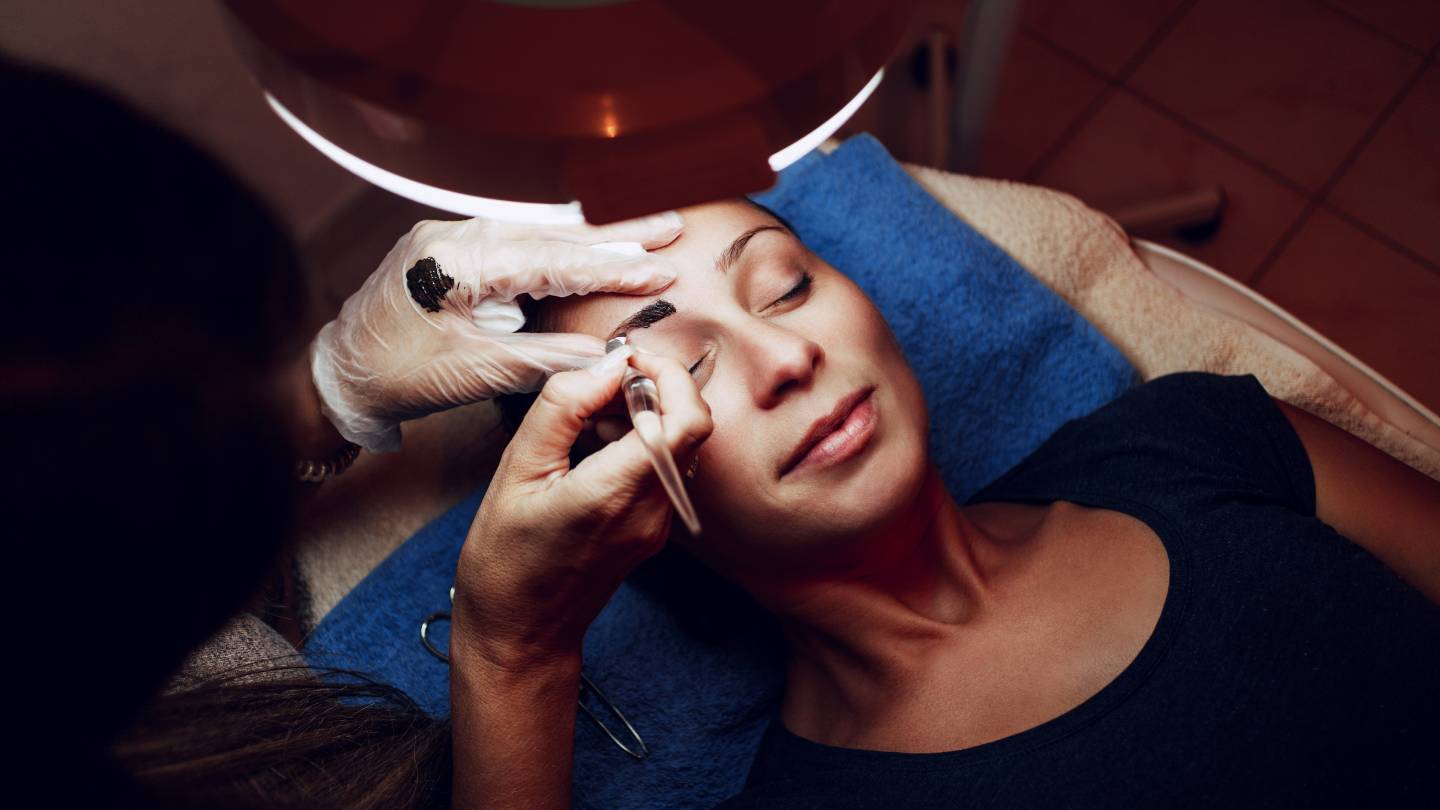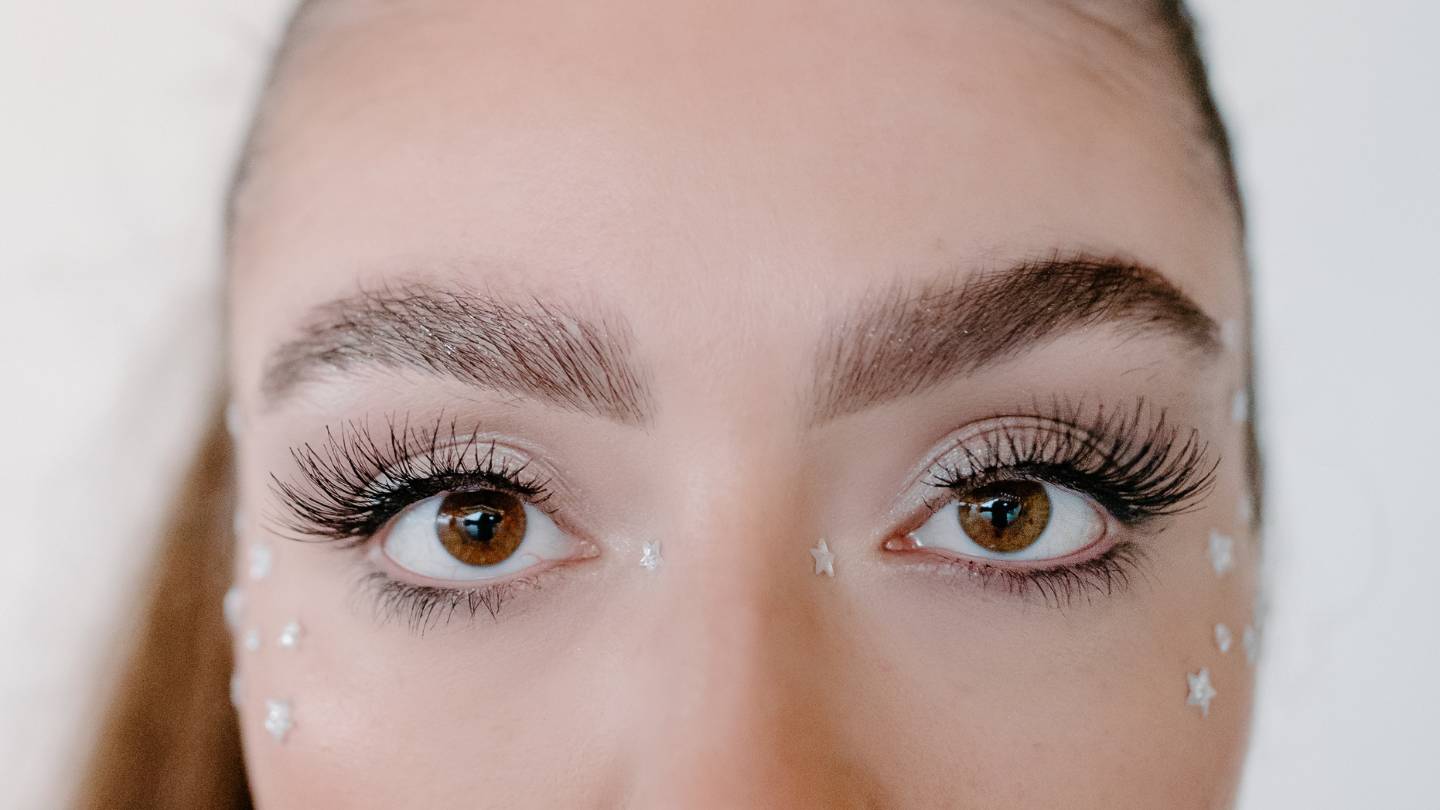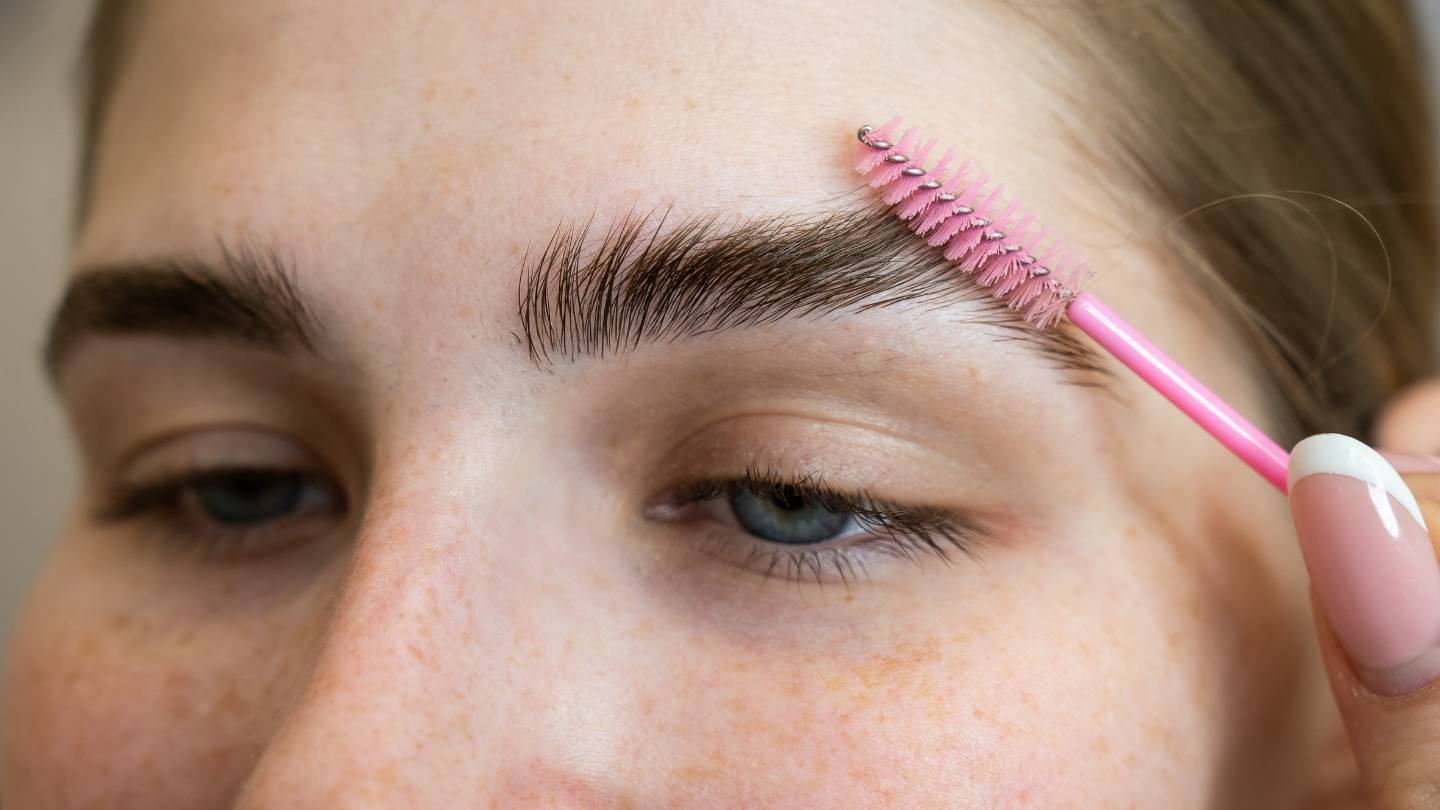Brow feathering is an art form that calls for trained hands who follow certain protocols. An artist's training, knowledge, and skill in completing feathering methods are validated by certification, which symbolises proficiency.
The importance of selecting a licenced eyebrow feathering artist is examined in this tutorial. Choosing an artist for their eyebrow augmentation journey may be made more informed when they know the training and certification procedures.
A certified artist has proven they have mastered the art form by studying facial anatomy, colour theory, sterilisation procedures, and safety precautions. In addition to adhering to ethical norms, qualified experts practice good cleanliness and use tactics to make clients feel comfortable and satisfied.
If you go with a qualified artist, you may rest easy and have more faith in the procedure's results. It reduces the possibility of problems or disappointing outcomes by guaranteeing high-quality pigments, equipment, and compliance with industry standards.
What's The Eyebrow Technician Path?
Are you interested in becoming an eyebrow technician because you find the technique of shaping brows fascinating? Becoming an expert in this profession is a path that can lead to profound personal growth and fulfilment. Working in this field requires both imagination and accuracy, as one might shape arches or enhance the beauty of nature.
Start your career as an eyebrow technician with this in-depth guide that covers all the necessary stages, credentials, and talents. If you have a deep interest in beauty, are looking to switch careers, or want to become an expert at brow aesthetics, this book will provide all the information you need to start a successful career.
How Eyebrows Work?
What do eyebrows do? Why do we need them? How do they do it? Only a few of us stop to think about our brows and what they might be used for. We're here to put some light on the matter.
Eye protection is the primary function of eyebrows. Our eyes are quite porous, and our brows act as a protective barrier to keep out sweat and precipitation. Once the liquid reaches the brows, it is syphoned off to the side, preventing it from getting into the eyes. Like our little built-in sun parasols, our brows shade our eyes from the sun and reduce the dirt and grit that land in them.
What Does An Eyebrow Technician Do?
An eyebrow technician's job is to take care of a client's eyebrows by shaping, tinting, and waxing them to help the client get the look they want. An eyebrow artist should know a lot about hair types and colours, as well as what shapes of eyebrows look best on different faces. How can your eyebrows look best with your face shape and features?
Also, knowing that an eyebrow expert does more than treat people physically is important. Making the area safe, welcoming, and nice will let your clients know they are in good hands. This will make the whole experience more relaxing and enjoyable for the therapist and the client.
Australian Qualifications For Microblading And Feathering
Whether we provide microblading certifications that the government recognises is among the most often questioned by current and future students. Whenever this question is asked of us, we must provide an identical response. Australia does not recognise any particular microblading qualification.
RTO training organisations are constrained to this because of their structure and the laws that limit the units of competency they may teach. Colleges in Australia must offer only full units of competency if they are RTOs (registered training organisations). Thus, an RTO cannot grant a specialised certification in microblading.
Regarding microblading, RTOs are only authorised to provide government-recognized Design and Cosmetic Tattooing certification in permanent cosmetics. Three of the following domains are covered by this certification:
- Eyebrow tattooing
- Areola Tattooing
- Lip Tattooing
- Eyeliner Tattooing
No RTO offers microblading certifications; microblading itself is not a skill unit. As a student or prospective student, you should know that offering permanent cosmetics services does not need a government-recognized certification. Both newbies and seasoned pros in the field often need to understand this.
A comprehensive rundown of the mandatory qualifications required by law to practice microblading and cosmetic tattooing in Australia follows.
- An artist's declaration of accomplishment from a practising artist with current TAE accreditation.
- Insurance
- Locations that have applied to the city council to engage in skin penetration.
Is Microblading Right for You?
When people ask us about what we do, they frequently have a lot of questions, which makes sense:
- What are the necessary skills to become a microblading artist?
- Please list the benefits and drawbacks of the job.
- Where do we begin?
The PMU world may sound easy, but it's rather challenging. However, you may improve your skills with practice and experience. Half the struggle is finding a good course with good guidelines, allowing you to learn faster with actual professionals.
Knowledge Requirements For Training Applications:
A Reliable Guide
Before you even think about offering your customer crisp strokes or colouring in an outline, ensure your hand is steady. A job in PMU may not be for you if you have trouble steadying your hands. Also, having good natural sketching abilities and the ability to freehand sketch straight lines is crucial.
Although we do not want to discourage you if you are truly committed, we do want you to know that if you are having difficulty meeting these standards, you will need to put in the time and effort necessary to progress and reach your full potential.
Mentally Fierce
You should have thick skin. Interacting with various clients daily is par for the course in this line of employment. Beyond your brow artistry, you will likely have to handle various events and scenarios brought about by your clients' personalities, worries, and expectations.
Even after you've explained everything to them several times, clients may still have persistent worries about the new feeling and how it will affect their healing process from the work you do for them.
Resourcefulness
Your destiny is in your hands; conquer the challenge of attracting new clients and securing the cooperation of your first models. It could be unsafe if you've never dealt with something like this.
Launch Funding
Funding your brow company isn't required, but having some on hand is a good idea to ensure things go well. Dependable training is an investment that can prepare you for success and expedite your earning potential; it will also save you a lot of heartache and wasted time. Additionally, use high-quality ink instead of lesser alternatives, as the latter could be better.
Be patient.
The road ahead can be challenging, but you must be strong enough to keep going when it becomes tough. Everyone starts off thinking their work is terrible. However, if you stick with it and practice regularly, you'll eventually start to become better and eventually be able to excel.
Sanitation And Sterilisation For Feathers
We adore you if you've ever been afraid to get microbladed eyebrows for fear of infection. Regarding microblading, everyone should be worried about how clean and safe it is. Remember, this isn't a temporary brow fix; it's semi-permanent!
What Are Some Microblading Artist Guidelines?
Costumed feather artisans will wear gloves, gowns, goggles, and masks. This procedure protects both the artist and the customer. Here are some more criteria for microblading artists:
- Even if you aren't using gloves, you should always wash your hands thoroughly before and after handling any customer. When washing your hands, make sure to apply an antiseptic.
- Always use gloves while handling blood, non-intact skin, or other potentially infectious body fluids.
- After each client, change your gloves.
- Protect yourself from client touch by donning a lab coat, scrubs, mask, and eye shield.
Do not perform the following activities in working areas:
- Drinking
- Putting on makeup
- Eating
- Smoking
- Handling contact lenses
How Does A Microblading Facility Show Proper Sanitation?
You can tell a reputable microblading clinic apart from the rest by looking for the following:
- Separation of hazardous and non-hazardous waste is done. The canisters for hazardous garbage are clearly labelled.
- Containers for sharp items, like needles, are designed to be both puncture-proof and disposable.
- It is promptly cleaned up whenever something goes wrong, like a spill.
When Something Is Off, What Should I Look Out For?
If any of the following happen, you should seriously consider postponing or cancelling your procedure:
- Any equipment, tools, or space might need a good cleaning.
- Needles do not come in airtight containers.
- When doing microblading, artists do not cover their faces with protective gear like masks and gloves.
- Asking the right questions is essential, but your microblading artist either won't or can't do it.
- The restaurant does not have any sanitation certificates.
Stop your microblading session if you think your salon isn't following protocol. Concerning permanent makeup, it's better to err on the side of caution. Locate microblading artists who have completed extensive training if you desire a stress-free procedure. These instructions should be committed to memory by all qualified microblading artists.
How to Get Great Microblading Work
It can be challenging to find a microblading artist near you. This post will help you find the right one by showing you the right questions to ask. Because you deserve it, and those are your eyebrows!
Are Images Of Your Work Available?
Above everything else, this must be addressed. When perusing their portfolio, look for a person whose hair and skin tone are similar to yours. Then, you'll know precisely what you're getting. Please ensure the artist you choose is familiar with how ink appears on your skin tone because it varies from person to person.
What Is The Healing Time For Photos?
You can photograph your healed eyebrows after 30 days. After 30 days, the artist can touch up the eyebrows to make them seem even better. This is because some ink from the first treatment has faded and gone through the skin. Because clients aren't certain to return, artists may only sometimes have fully healed photos.
In What Time Does A Microblading Session Typically Last?
The inking process for a standard microblading session usually takes between thirty and forty-five minutes. When every line is meticulously written by hand, it becomes impossible to achieve a lesser height. Overworking the skin for more than 45 minutes is another cause for concern since it can lead to damage.
Conclusion
Eyebrow experts love shaping brows, and it can help you grow as a person and be happy. To help their customers get the look they want, they shape, tint, and wax their eyebrows. To make the experience comfortable and fun for both the therapist and the client, they should know about different hair colours, face shapes, and hair types.
Australia does not recognise any specific microblading certifications because they are not given out by approved training organisations (RTOs). RTOs are only allowed to offer government-approved Design and Cosmetic tattoo certification in three areas: tattoos on the eyebrows, the upper eyelashes, the lips, and the eyeliner.
To become a microblading artist, you need a good guide, steady hands, the ability to draw naturally, and the skill to draw straight lines without using a ruler. It is important to put in the time and effort needed to improve and reach your full potential if you have trouble with these standards.
Microblading is a very difficult job that needs mental toughness, creativity, and patience. It means dealing with the personalities, worries, and demands of clients, as well as getting new clients and getting them to work with you. To be successful, you need to have good training, use good ink, and wait your turn.
Because microblading is semi-permanent and needs careful care, it is very important to clean and sterilise the area before and after doing it. To keep themselves and their clients safe, artists should wear masks, gloves, gowns, goggles, and dresses. Reputable microblading shops should keep dangerous and non-hazardous trash separate, have containers that can't be punctured by sharp objects, and clean up spills right away.
If something goes wrong, you might want to delay or cancel the process because tools, equipment, or space may need to be cleaned. Protective gear shouldn't cover artists' faces, and artists should be given health certificates.
To get great microblading, find an artist whose hair and skin tone are similar to yours and make sure they know how the ink should look. Photos need 30 days to heal, but artists can touch up the eyebrows after that time to make them look better.
A normal microblading session lasts between 30 and 45 minutes. Working the skin too hard for more than 45 minutes is not a good idea. You can become a skilled and experienced microblading artist if you follow these tips.
Content Summary
- Brow feathering is an art form requiring trained, certified artists.
- Certification validates an artist's training, knowledge, and skill in eyebrow feathering.
- The tutorial explores the importance of choosing a licensed eyebrow feathering artist.
- Knowledge of facial anatomy, colour theory, sterilisation, and safety are key for certified artists.
- Certified artists adhere to ethical norms, maintain good hygiene, and focus on client comfort.
- Choosing a qualified artist ensures trust in the procedure's results and reduces risks.
- High-quality pigments and equipment are used by certified artists.
- The role of an eyebrow technician involves shaping, tinting, and waxing eyebrows.
- An eyebrow artist must understand hair types, colours, and suitable shapes for different faces.
- Creating a safe, welcoming environment is part of an eyebrow technician's job.
- In Australia, no specific microblading qualification is government-recognized.
- RTOs in Australia can only offer full units of competency, not specialised microblading certifications.
- The government-recognized certification in permanent cosmetics covers eyebrow, areola, lip, and eyeliner tattooing.
- Permanent cosmetic services in Australia don't require a government-recognized certification.
- Microblading artists in Australia must have a declaration of accomplishment and proper insurance.
- To become a microblading artist, one must possess steady hands and natural sketching abilities.
- The role of a microblading artist involves dealing with various client personalities and concerns.
- Initial funding and investment in quality training and materials are important for aspiring artists.
- Persistence and regular practice are essential for success in the PMU industry.
- Microblading requires strict sanitation and sterilisation to prevent infections.
- Microblading artists must wear protective gear and follow strict hygiene practices.
- Handwashing, glove use, and protective clothing are crucial for microblading artists.
- A reputable microblading facility separates hazardous waste and uses puncture-proof containers.
- Warning signs of poor sanitation include dirty equipment and lack of protective gear.
- Choosing a trained and experienced microblading artist is crucial for a safe procedure.
- It's important to review a potential microblading artist's portfolio for quality work.
- Checking healed eyebrow photos is important to assess an artist's work quality.
- A typical microblading session lasts between 30-45 minutes, with precision in every line.
- Overworking the skin beyond 45 minutes in microblading can cause damage.
- Eyebrows primarily function to protect eyes from sweat, precipitation, and sunlight.
- Eyebrows also help to reduce dirt and grit entering the eyes.
- The journey of becoming an eyebrow technician requires dedication to both creativity and precision.
- An in-depth guide for aspiring eyebrow technicians covers the necessary stages, credentials, and skills.
- Being an eyebrow technician can lead to profound personal growth and fulfilment.
- To excel in PMU, having resilience and the ability to handle client feedback is essential.
- Attracting new clients and models is a challenge that requires resourcefulness.
- Microblading is semi-permanent, highlighting the importance of cleanliness and safety.
- Proper sanitation in microblading includes prompt cleanup of spills and proper waste management.
- Avoiding microblading sessions in unsanitary conditions is crucial for health and safety.
- Asking the right questions and verifying an artist's credentials are key to a safe microblading experience.
- The right microblading artist should be knowledgeable about the appearance of ink on different skin tones.
- Understanding the healing process of microblading is important for assessing an artist's work.
- The role of an eyebrow technician is not only to provide physical treatment but also to create a positive experience.
- Eyebrow technicians should have a deep interest in beauty and a desire to excel in brow aesthetics.
- The importance of a qualified eyebrow feathering artist includes guaranteeing high-quality results.
- A certified eyebrow feathering artist ensures a reduced risk of complications.
- Proper training in microblading includes understanding the art form and mastering relevant techniques.
- The tutorial emphasises the significance of proper training and certification in eyebrow feathering.
- Eyebrow feathering requires an understanding of various aspects, including sterilisation and facial anatomy.
- The role of an eyebrow technician involves a blend of artistic skill and customer care.
Frequently Asked Questions
Uncertified artists may need more training, increasing the likelihood of unsatisfactory results, infections, or complications due to improper procedures.
Yes, organisations like the Society of Permanent Cosmetic Professionals (SPCP) and PhiBrows offer recognised certifications in microblading.
Laws vary by location, but many places require certification or licensing to perform these procedures legally.
While possible, uncertified artists might need more expertise to achieve consistent and satisfactory results compared to certified professionals.
While cost is a factor, prioritizing certification ensures quality and safety, reducing risks associated with cheaper, uncertified services.



